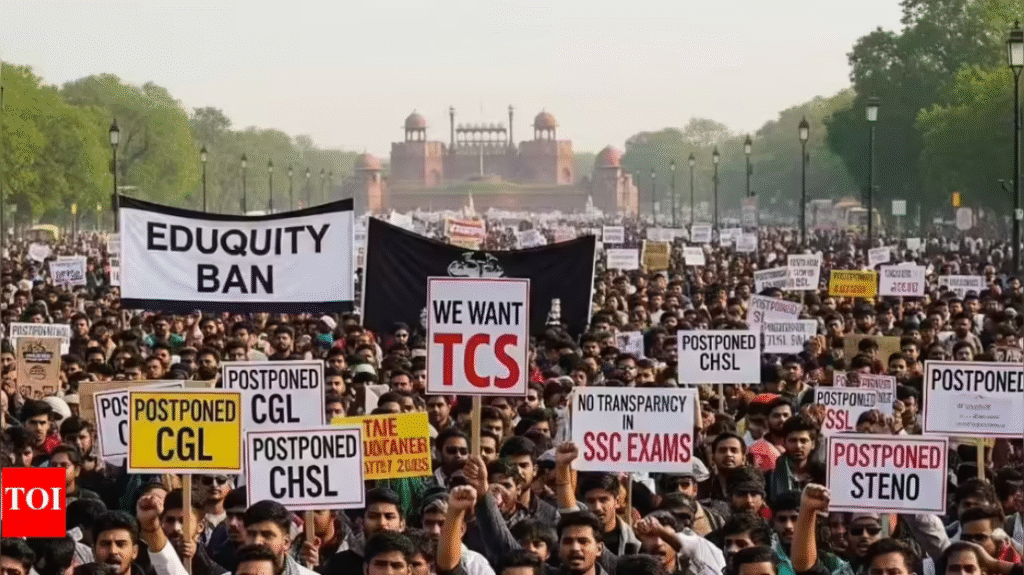Election Kicks Off Amid Constitutional Transition
India’s Vice President election began on September 9, 2025, over a month after Jagdeep Dhankhar’s resignation citing health reasons. In a constitutional process through secret ballot, Parliamentarians from both Houses vote to elect the new Vice President of India, who serves as the Chair of the Rajya Sabha and steps in as Acting President if needed. With Prime Minister Modi’s NDA nominating C P Radhakrishnan and the opposition INDIA bloc putting forth Justice B Sudershan Reddy, a retired Supreme Court judge, the election now scrutinizes how constitutional office intersects with political clout.
Candidates & Parliamentary Numbers: Can NDA Secure Victory?
The NDA’s nominee, Governor C P Radhakrishnan, brings political experience and backing from major allies including AIADMK and YSRCP. Meanwhile, the opposition candidate Justice Sudershan Reddy, stands firm on judicial stature, backed by Congress, DMK, SP, TMC, and others. The electoral college comprises 781 MPs (543 Lok Sabha + 233 Rajya Sabha + 12 nominated = 788, minus vacancies) with a majority mark of 391 votes. The numbers clearly favor NDA, with projections suggesting upwards of 427 votes in support of Radhakrishnan.
Role of Abstentions & Strategic Alignments
Some regional parties like BRS, BJD, and Shiromani Akali Dal chose to abstain, raising questions around representation and political messaging. BRS tied its non-participation to unresolved farmer issues, particularly urea shortages, highlighting how local concerns influence national elections. At the same time, YSRCP broke ranks to support NDA, signaling shifting political loyalties.
The Voting Process: What Every MP Must Know
- Voting began at 10 AM and will continue till 5 PM, with counting slated for after 6 PM.
- MPs cast their votes via secret ballot through single transferable vote (STV) mechanism.
- Opposition held a mock vote in Central Hall to train members and reduce invalid ballots, underscoring the importance of procedural accuracy.
- Notably, Vice Presidential polls do not follow party whip, allowing members to vote independently.
Political Messaging & Legal Framing
Senior politicians from both sides used the campaign to project greater symbolism. NDA leaders invoked “fairness, truthfulness, and effectiveness” in advocating for Radhakrishnan. Opposition, meanwhile, urged MPs to “vote with conscience,” emphasizing the constitutional importance of the role. The Vice President election illustrates how a constitutional position can become a site for legal and moral dialogues on governance.
Legal and Constitutional Insights
Vice President’s Role
Constitutionally, the Vice President chairs the Rajya Sabha and steps in as Acting President in cases of vacancy—thus safeguarding legislative continuity. The role is largely ceremonial but carries weight in maintaining order and balance in governance.
Electoral Legitimacy
The use of STV and secret ballots ensures fairness but also demands MPs vote judiciously. Abstentions, while legal, alter vote dynamics and test the resilience of democratic institutions.
Party Autonomy
As Vice Presidential polls have no imposed party whip, MPs are legally empowered to act independently, reinforcing the autonomy intended for upper constitutional offices.
Historic Echoes and Significance
This Vice President election mirrors past vice-presidential contests with both political drama and legal overtones. Notably, in 1962, Vijayalakshmi Pandit—Nehru’s sister—was considered a strong contender but never stood. This illustrates how the office has symbolic resonance, particularly when held by notable personalities.
What Comes Next?
- Results Expected by Evening – Counting begins around 6 PM, likely yielding timely clarity.
- New V-P’s Impact – As the new Chair of Rajya Sabha, the Vice President will influence parliamentary functioning.
- Legal Watchpoints – Observers will assess how this Vice President election impacts future norms around party abstentions, cross-voting, and political dissent.
- Alliance Dynamics – YSRCP’s and others’ support may reshape regional political landscapes ahead of state elections.
Conclusion
India’s 2025 Vice President election is a confluence of law, politics, and constitutional formality. While the NDA’s candidate is airborne due to numerical superiority, the contest reflects key principles of democracy: constitutional balance, electoral probity, and moral representation. As MPs cast their ballots, India watches both the votes and what they reveal about democratic resilience.
To read more Indian Laws and news, visit Legal Guide India



